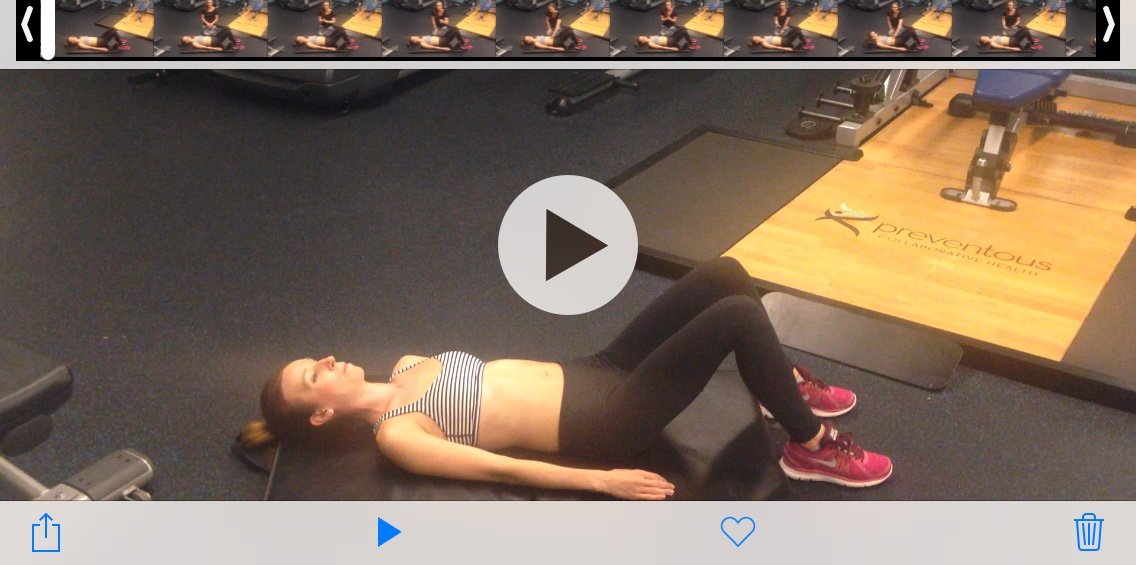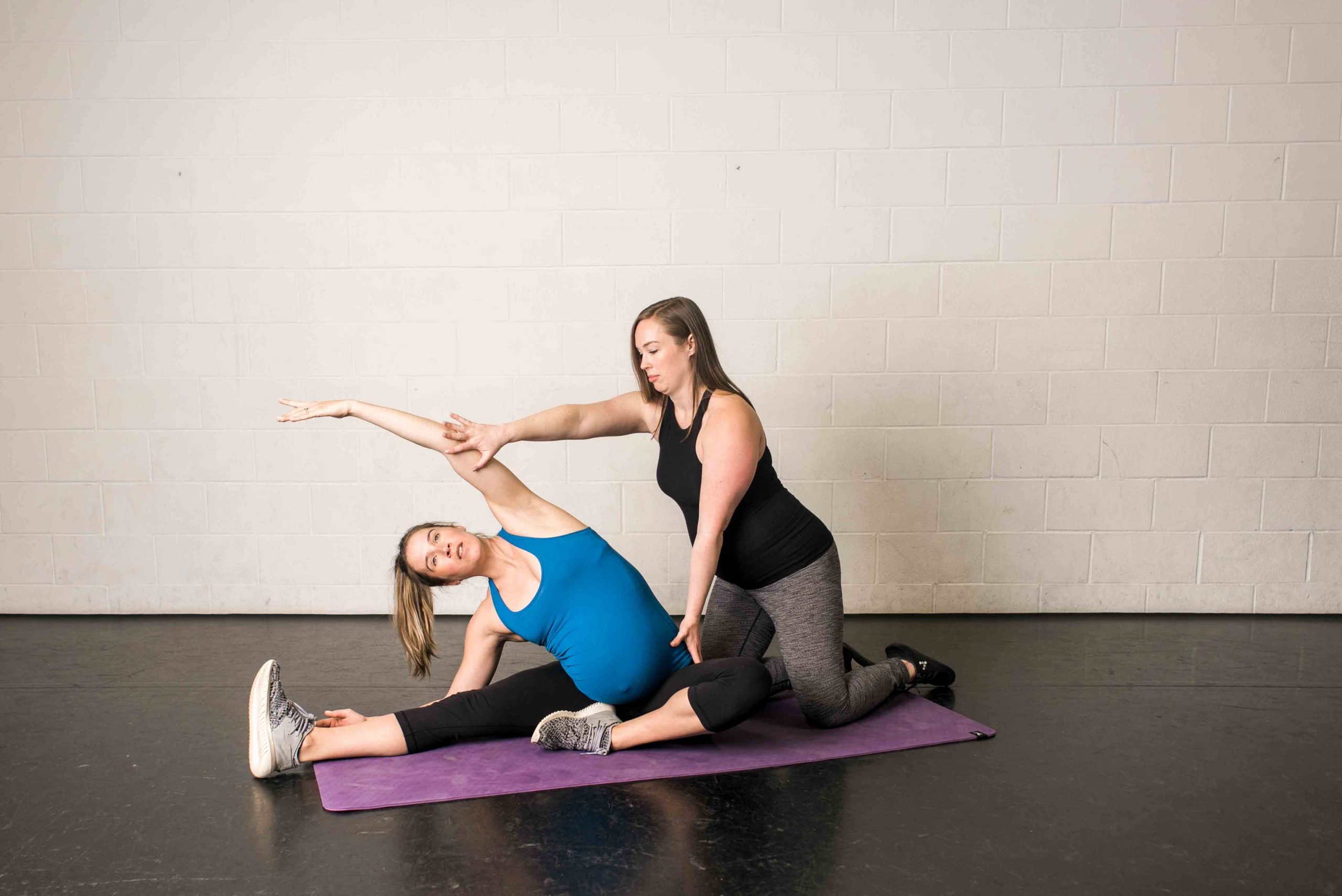“My separation is only at 2 fingers, but I have this poochy tummy that won’t go away.”
“I can’t tell if I have a separation. I can’t feel anything.”
“I don’t know if I’m testing the right way.”
“I can feel more of a gap when I’m lying flat down and then it closes once I do a crunch.”
These are really common things women say to me when they are trying to assess their Diastasis Rectus Abdominis (DRA).
DRA is often referred to as an abdominal muscle separation, and while it IS technically a separation of the rectus abdominis muscle bellies from the midline of the belly, there’s more to it than that.
Diastasis is a very common occurrence in pregnancy and often subsists postpartum. Yes, you can have it even if you have not been pregnant and if you’re not a woman. The research isn’t plentiful, although we’re learning more and more. Here’s what the stats say:
• 66% of women in their 3rd trimester have DRA (Boissonnault & Bleschak, 1998)
• 53% of women immediately postpartum have DRA (Boissonnault & Bleschak, 1998)
• The first 8 weeks postpartum are critical healing time for DRA (Coldron et al., 2008)
…Oops!
We used to preach a “close the gap” exercise program, as in get those muscles back together, zipped up, gap down to nil. If you had a gap of 2-fingers separating your abdominal muscles it was a “no front planks allowed” diagnosis. But, now…
Thank You, Research
Here’s what we’ve learned: we want the connective tissue, the linea alba, to be able to regain it’s function. This means that the connective tissue running along the front side of the abdominal wall from your sternum to your pubic bone should be supportive, gain tension when you need it to, help support your body when you deadlift/sprint/hoist your toddler, etc.
If you’re an anatomy geek like me, I highly recommended watching these lectures from Diane Lee on the pelvic floor and DRA. Very cool stuff.
Postpartum? We tend to see the linea alba be a wee bit loose and lax = a core and floor with less support than we’re used to.
Having integrity and support with this connective tissue allows the abdominal muscles (not just the recti bellies) to do their job. We need the abdominals to apply force in order to stabilize the spine and pelvis. When the connective tissue is lax and loose, that function seems to be decreased.
How To Assess For DRA
These are the exact steps I follow when I assess a diastasis ON a client. You can do the same process on yourself.
I’ve been lucky to learn from many excellent pelvic floor physiotherapists over the years the process to follow for testing a diastasis. I believe this is the most effective method when you’re manually assessing (e.g. no access to ultrasound) a client, which is what we do in the gym as trainers.
Below, I am demonstrating how to assess DRA on my client, Pam (thanks, Pam!). She is 8 months postpartum, has been dedicated to her Core + Floor Restore rehab, got the all clear from a pelvic floor physiotherapist, and is back to heavy weight training and running with no issues – both things she loves to do. Wahoo!
We’ve been working together since she was 8 weeks postpartum and have been focused on healing her core and floor. Her DRA feels completely different now than it did previously. When I first assessed her, I could press down quite far into her belly and Pam could easily feel that on herself, too. Now, her linea alba is rock solid.
Take a look to see what I do to assess Pam’s DRA here:
Step 1: Lying on their back with the knees bent and feet flat on the floor, have the client lift the shirt so you can see the skin. Gives you some extra info on the quality of the connective tissue.
Step 2: Walk your hand along the linea alba to get a sense of the tension in the linea alba.
Step 3: Start with the 3 middle fingers of one hand pressing straight down into the client’s belly just above the belly button. Cue them to tuck the chin towards the chest and SLOWLY lift the head up off the floor.
Step 4: Repeat a couple of times adding or taking fingers away to get an accurate measurement with a very small head-lift off the floor (no full crunches).
Step 5: Re-test above the belly button and below (check the video for the distances).
Step 6: Re-test at all 3 measurement sites, but now have the client “pick up their pelvic floor” (aka. lift the vagina and anus up gently into the bod) on their exhale breath and then lift their head.
Did you feel a difference in sensation in the linea alba?
More functional DRA = Yes, great tension in the linea alba. It felt taut and supportive. The belly wasn’t bulging just nicely tensed.
Less functional DRA: No, felt no difference in tension when connected to the core and floor. Could still press into the belly quite far.
Functional DRA Case Study
In the case of my client, Pam, I’m comfortable re-training her in front-loaded positions (planks, pushups, conventional deadlifts) now. I re-test her in these positions (video to come!) to make sure she is maintaining tension and control.
When her linea alba was lax, loose, and unable to gain good tension her belly would have been bulging out during those types of exercises. Not what we’re going for!
Good luck with your DRA assessments.
JMG
If you liked and learned from this article, see my Core + Floor Restore program. It is an 8-week program for pregnancy and postpartum, designed to rehab the abs, heal the pelvic floor, and gain strength.





![My fitness coaching was leading moms to feel like trash about their bodies. 🫣
As if they needed that when inundated with messages to “get their bodies back” and programs to fit back in their pre-pregnancy jeans.
‼️ AND AND AND. As if I could continue to contribute to them keeping their mental energy on their size of their stomachs (when so many people in the world are living within oppression and true horrors).
Not to mention…
👉🏻👉🏻 The more hyper vigilant my clients felt about their bodies, the more their pelvic floor symptoms RAMPED UP.
A pillar of our Prenatal and Postnatal Fitness Specialist Academies - our fitness and pelvic health coaching certifications - is supporting perinatal folks from a size inclusive, non-diet perspective.
🗣There are ZERO discussions and no guidance on how to help your clients get smaller bodies.
You can coach in this way, too. But, you’ll need to commit to it.
[SAVE $500] Enrolment is NOW OPEN for the Prenatal and Postnatal Fitness Specialist Academy! ✨
PFSA is unlike any other pre/postnatal or pelvic health certification on the market.
Savings end Thursday, April 25th at midnight PST! DM me “PFSA” and I’ll send all the details to you, so you don’t miss ❤️
#CesareanRecovery #PrenatalExercise #PregnancyTips #PrenatalExercises #PrenatalFitnessTrainer #ActivePregnancy #PostpartumPilates #PostnatalWorkout #PostnatalExercise #PostpartumTraining #PostnatalCheck #PostpartumExercise #SafeExercisePostpartum #FullBodyWorkout #ParentWorkout #WorkoutsForParents](https://jessiemundell.com/wp-content/plugins/instagram-feed/img/placeholder.png)
